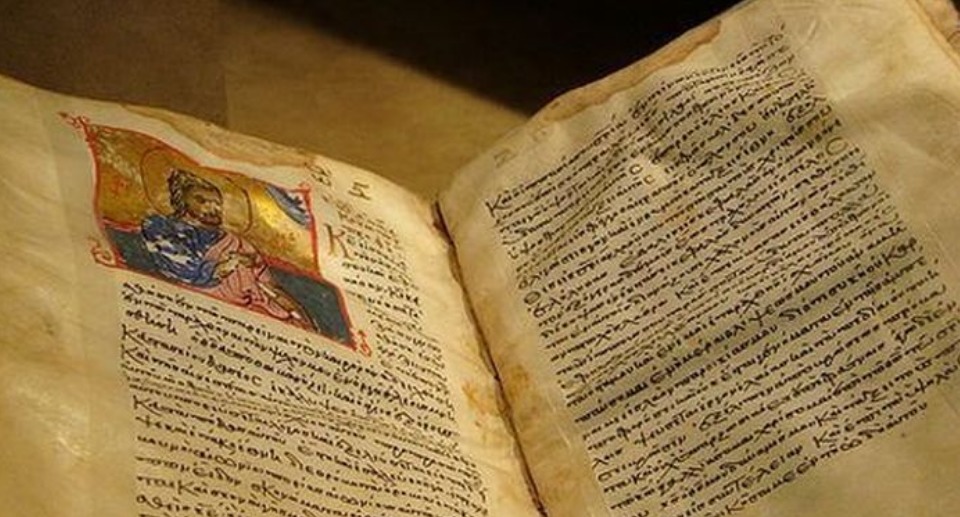|
What “Bible” do we use?
We use use the “same Bible” as other Christians. Specifically:
We
use the
Septuagint
canon and text of the
Old Testament,
because these are the “Hebrew Scriptures” read by Christ in
the synagogues and used by the Apostles wherever they
preached.
We
use the
New Testament
canon and text developed over the first several
centuries by the Orthodox Church.
The
Septuagint,
abbreviated “LXX,” is a
Koine
Greek translation of the Hebrew scriptures done by seventy (or
seventy-two) elders about two centuries before Christ in
Alexandria, Egypt. The Septuagint was the “Bible” in
first-century Palestine and the Jewish diaspora throughout the
Mediterranean region.
At
the time of Christ, Hebrew was only used and understood at the
Temple in Jerusalem. Aramaic was the spoken language of Jews
in Palestine, and Koine Greek was the lingua franca,
the commonly-spoken language, of Mediterranean lands in the
Roman Empire. When Jesus read in the synagogue (e.g., Luke
4:16) He did so from the Septuagint. The Apostles preached in
Koine Greek, and used the Septuagint texts wherever they
quoted the Old Testament in their Gospels and Epistles.
Contemporary
scientific research absolutely supports both the canon (list
of books) as well as the text of the Septuagint Scriptures as
the original and authentic “Hebrew Scriptures.” The Hebrew-language
Dead Sea Scrolls
attest to the accuracy of the Septuagint translation as well
as to its canon. The Hebrew and Koine Greek texts are
identical, providing us with the only accurate versions of the
Old Testanment.
On
the other hand, neither the canon nor the text of “Hebrew
Scriptures” from the
Masoretic text –
which today are read and studied by Jewish, Roman Catholic,
and Protestant faithful, as well as by academic scholars – are
accurate. The Masoretic canon was defined in the second
century after Christ, containing fewer Books
than the Septuagint, and is thus incomplete. The text is a
Medieval-era translation from the Septuagint Greek version by
a Jewish community, known as the Masoretes, and completed
between the seventh and tenth centuries after Christ and
differs significantly from both the Septuagint and the Dead
Sea Scroll texts.
The
Orthodox Church has consistently used the Septuagint Old
Testament, which was the Bible of the Apostles, from the very
first years of Christianity – indeed from the time of Jesus
Christ.
The
accepted canon of the New Testament developed gradually during
the first several centuries of the Church. The first known
listing (canon) of the New Testament in its final form as we
know it today is found in the Paschal Letter of Saint
Athanasius of Alexandria in AD 367. The Council of Carthage in
AD 397 was the first to synodically codify this same canon.
The
Orthodox canon and text of the “Bible” is the
Byzantine Text Type,
on which all Biblical translations are based. It underlies the
Textus Receptus,
used for most non-Orthodox canons and translations of the New
Testament into vernacular languages. Orthodox Christianity is
the Church of the Bible, it gave the Bible to the world, and
it continues to proclaim the Scriptures according to their
ancient, original, Apostolic, understanding.
Translations
inevitably fall short of the original, and all English
translations of the Bible have deficiencies when compared to
the original Scriptural texts. The King James Version (KJV)
is, arguably, the most-accurate English translation available
but for practical reasons in English-speaking lands the
Orthodox Church uses the modified
New King James Version
(NKJV) for the instruction and spiritual edification of the
faithful. The
Orthodox Study Bible
is therefore our standard “Pew Bible” and home study Bible.

|

